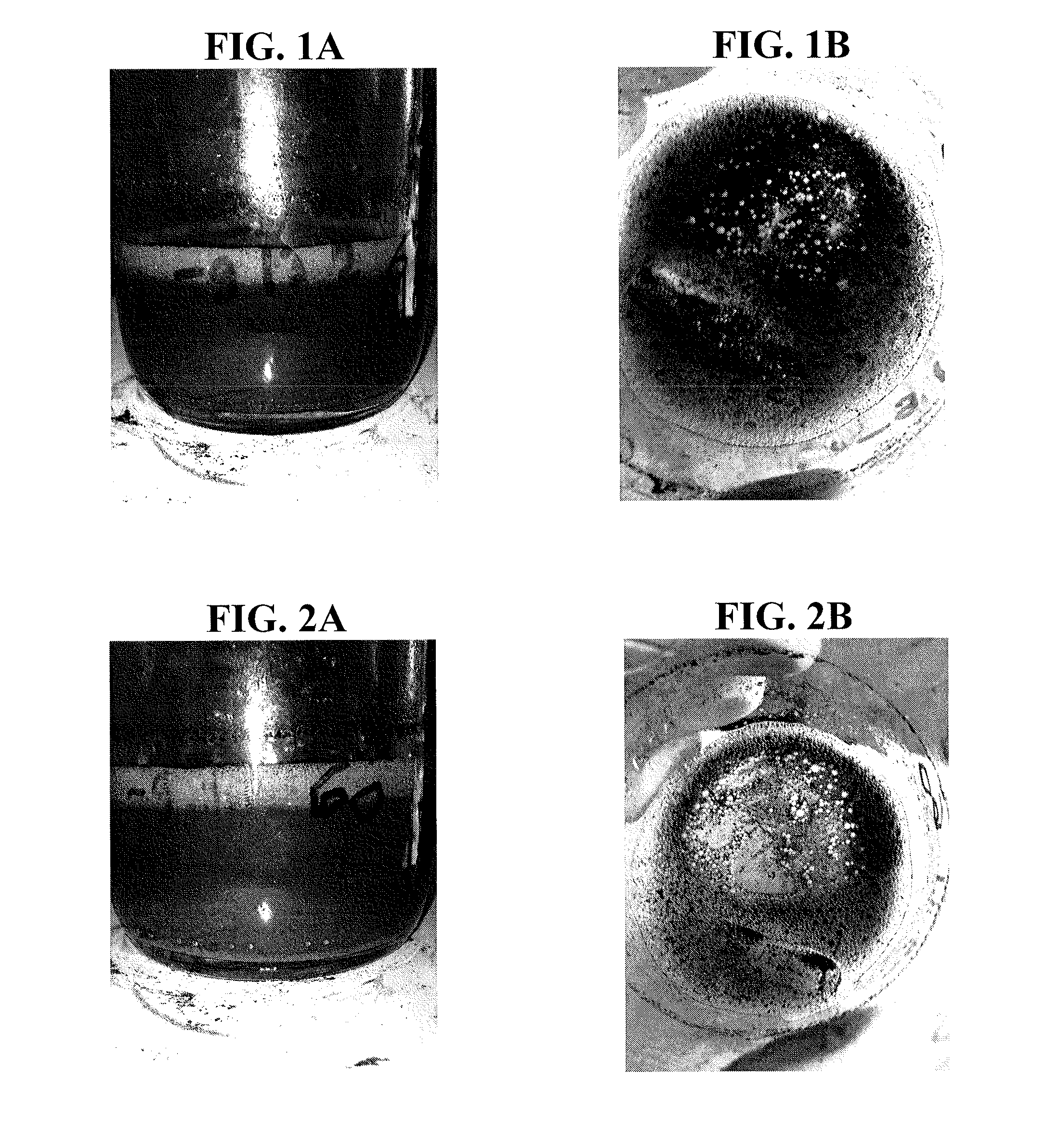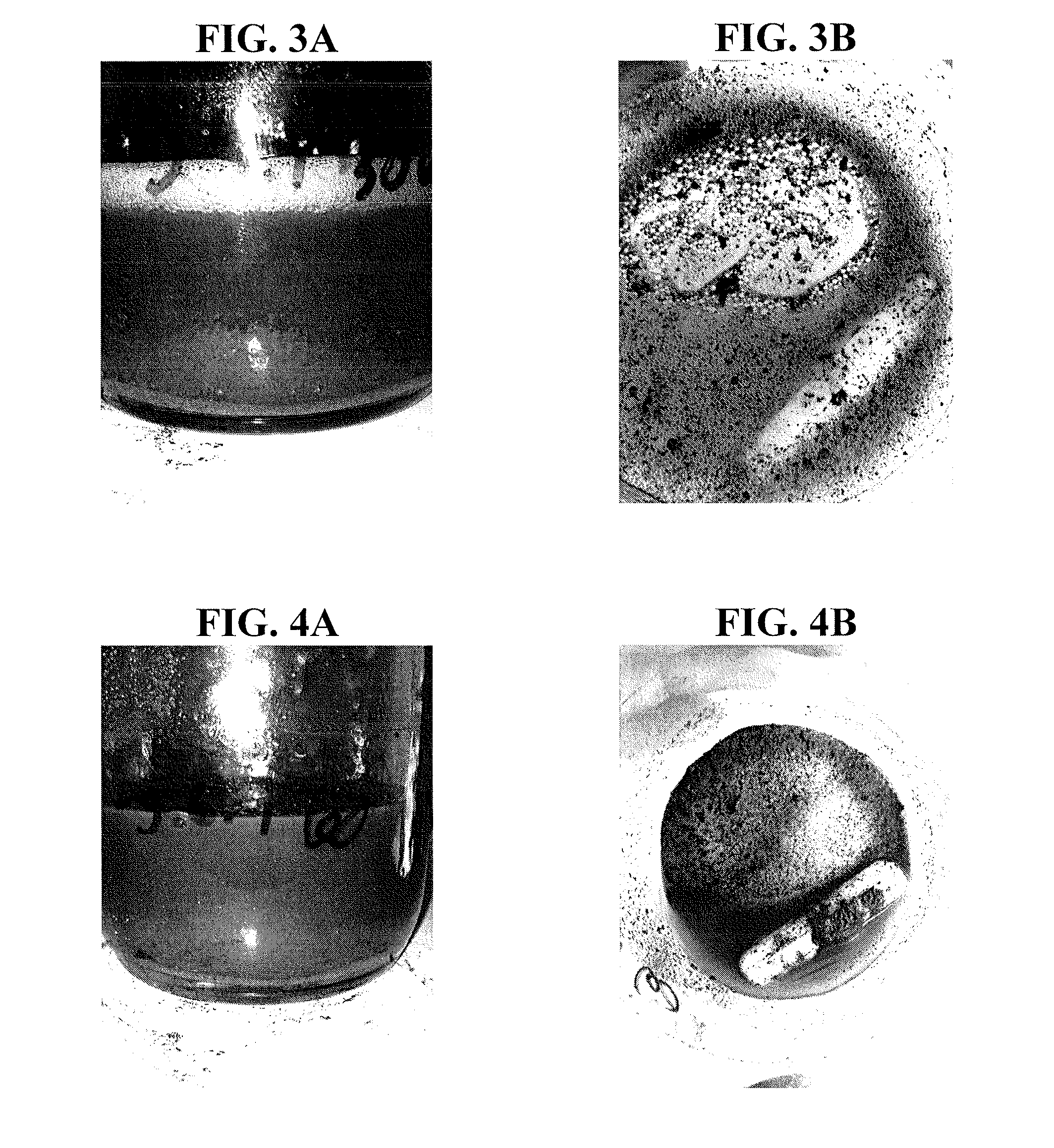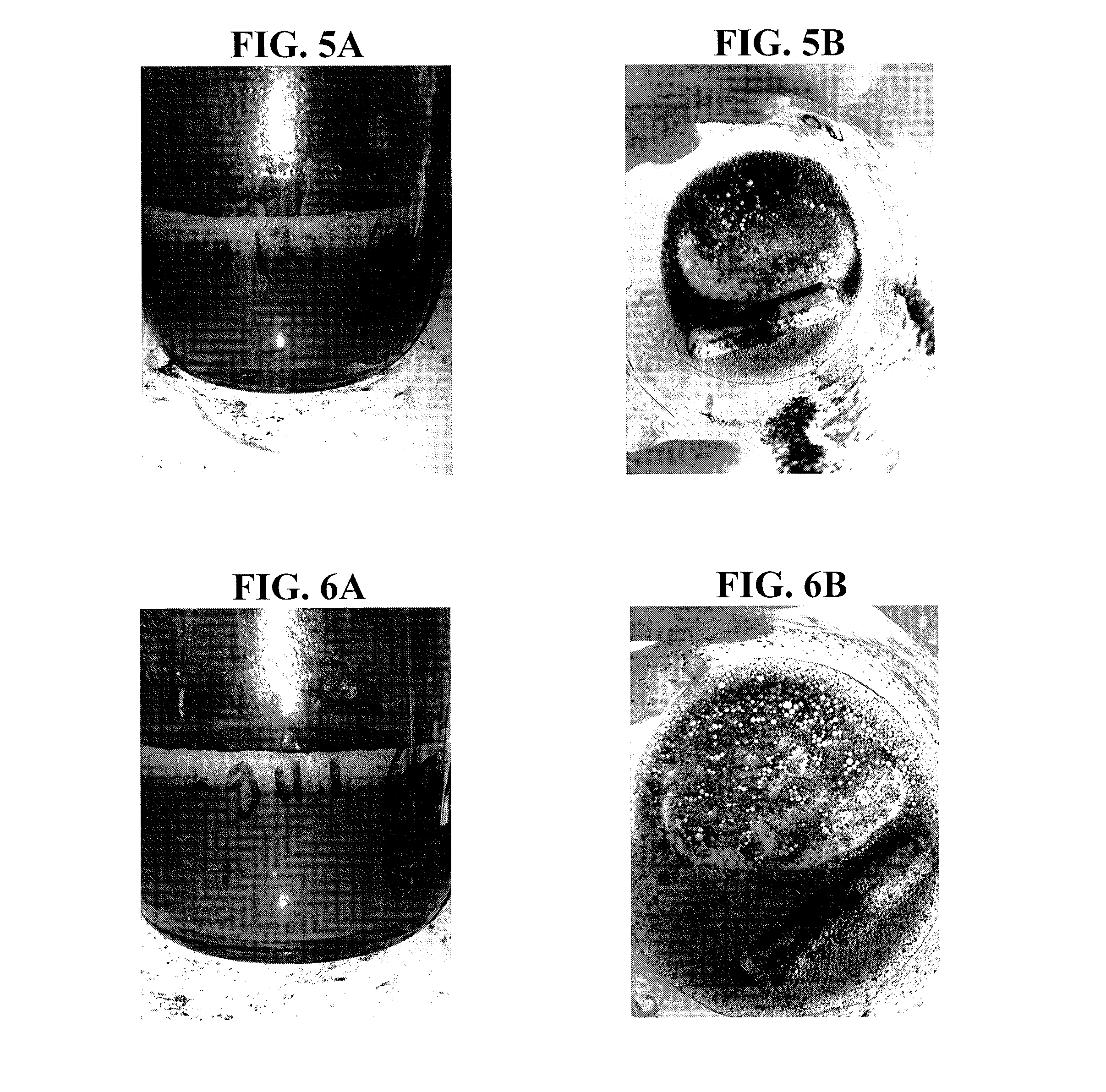Plant-based compositions and uses thereof
a technology of compositions and plants, applied in the direction of plant/algae/fungi/lichens ingredients, energy-based wastewater treatment, treatment water, etc., can solve the problems of large energy consumption, uncertain petroleum supplies from such regions, and depletion of easily accessible reserves, so as to prevent soil erosion, prevent soil erosion, and prevent sand or road surface
- Summary
- Abstract
- Description
- Claims
- Application Information
AI Technical Summary
Benefits of technology
Problems solved by technology
Method used
Image
Examples
example 1
[0395]An illustrative aqueous composition of the invention comprising plant material, but not comprising polysaccharide other than that present in or derived from the plant material, was prepared as follows. Citric acid (4.91 grams) was dissolved in 0.714 kg of 70% isopropanol at about 23° C. Corn gluten meal (2.28 kg) was added, and the resultant mixture was allowed to stir for 2 hours. 2.844 kg of a 50% aqueous sodium hydroxide solution was added to 13.6 kg of water, the resultant diluted sodium hydroxide solution was added to the isopropanol / corn gluten meal mixture, and the resultant mixture was allowed to stand for 6 hours. Sodium chloride (9.1 g) was then added, also with stirring. The resultant mixture was then allowed to stand an additional 2 hours. S-type hydrated lime (90.8 g) was then added with stirring, and the resultant mixture was stirred until uniform. The solids were allowed to settle, and the supernatant was decanted to provide the illustrative aqueous composition ...
example 2
[0396]An illustrative aqueous composition of the invention comprising plant material and polysaccharide was prepared as follows. Citric acid (4.91 grams) was dissolved in 0.714 kg of 70% isopropanol at about 23° C. Corn gluten meal (2.28 kg) was added, and the resultant mixture was allowed to stir for 2 hours. 2.844 kg of a 50% aqueous sodium hydroxide solution was added to 13.6 kg of water, the resultant diluted sodium hydroxide solution was added to the isopropanol / corn gluten meal mixture, and the resultant mixture was allowed to stand for 6 hours. Guar gum (113.5 g) wetted with 70% isopropanol was then added to the isopropanol / corn gluten meal mixture with stirring. Sodium chloride (9.1 g) was then added, also with stirring. The resultant mixture was then allowed to stand an additional 2 hours. S-type hydrated lime (90.8 g) was then added with stirring, and the resultant mixture was stirred until uniform. The solids were allowed to settle, and the supernatant was decanted to pro...
example 3
[0397]In a glass vessel, the aqueous composition of Example 1 (2.5 g) was combined with water (47.5 g) to provide an extractant. To the extractant was added 5 g of Athabasca oil sand. The pH of the resultant mixture was 13.2. The mixture was then stirred using a magnetic stir bar for 135 minutes at about 23° C. After 15 minutes of stirring, some extraction of oil from the oil sand was observed. Complete extraction of the oil, as determined by the observation of clean sand in the bottom of the vessel after a brief settling period, was not observed. FIGS. 1A-B are photographs showing a side view of the mixture in the vessel after 60 min of stirring then briefly allowing the mixture to settle (FIG. 1A), and a top view of the inside of the vessel after decanting the supernatant (FIG. 1B), also after 60 min of stirring. This example demonstrates that an illustrative Composition of the Invention is useful for extracting at least some hydrocarbon-containing oil from a substrate.
PUM
| Property | Measurement | Unit |
|---|---|---|
| temperature | aaaaa | aaaaa |
| wt % | aaaaa | aaaaa |
| wt % | aaaaa | aaaaa |
Abstract
Description
Claims
Application Information
 Login to View More
Login to View More - R&D
- Intellectual Property
- Life Sciences
- Materials
- Tech Scout
- Unparalleled Data Quality
- Higher Quality Content
- 60% Fewer Hallucinations
Browse by: Latest US Patents, China's latest patents, Technical Efficacy Thesaurus, Application Domain, Technology Topic, Popular Technical Reports.
© 2025 PatSnap. All rights reserved.Legal|Privacy policy|Modern Slavery Act Transparency Statement|Sitemap|About US| Contact US: help@patsnap.com



